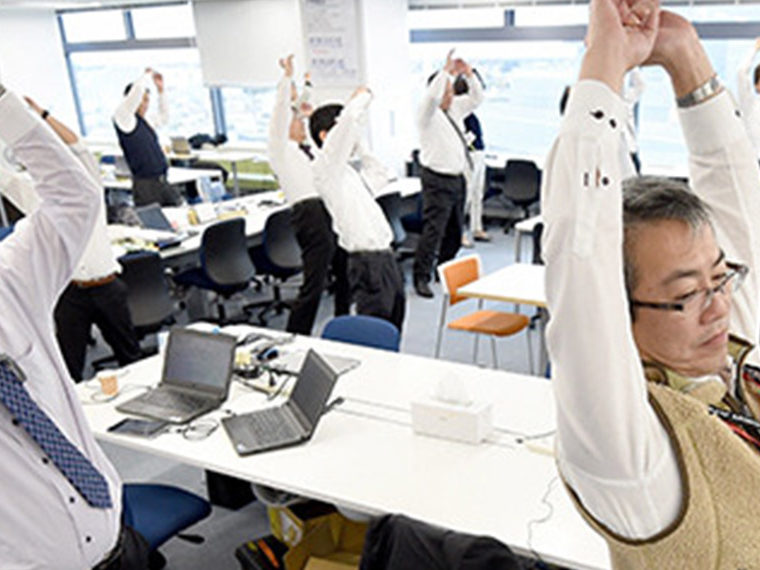Social and institutional forces ultimately enable — or stifle — change
In a matter of a few weeks, the COVID-19 pandemic upended long-standing work arrangements, closing offices and sending millions to toil at their dining room tables. Now, as the world gradually begins to look toward post-pandemic life, management experts are predicting that working remotely — probably in a hybrid setting with a few days a week in the office — is here to stay.
Of course, forecasts of the inevitability of remote work — or “telework,” as it was once called — are as old as the internet, whose evangelists said would make dialing in to the office from a beach in Greece or a ski lodge in Taos a routine occurrence. Certainly, without such technologies as Zoom, Slack and high-speed cellular networks, the sudden shift to work from home in early 2020 would not have been possible. The question is: Why did it take a global pandemic to make the change happen?
A paper forthcoming in Industrial Relations Journal from UCLA Anderson’s Christopher Erickson and Loyola University Chicago’s Peter Norlander describes why technology alone isn’t enough to usher in new forms of work. New technologies simply set the stage. Other forces — such as outside shocks like the pandemic and in an earlier era the Great Depression and the First and Second World Wars — are needed to spur a significant change. Then business, labor and government come in to negotiate a new “social contract” that sets the terms for an alternative form of work.
“While technology can create the potential for new forms of work organization, we view work organization itself as fundamentally governed by social contracts that settle who is to do what and when, how they are to be monitored and paid, and who is in charge,” the authors write.
For years, futurists and management experts have predicted that new information and communications technologies would transform work. But so far, the changes haven’t appeared in labor statistics.
For instance, the rise of Uber and TaskRabbit has led many to believe that those and other gig-work platforms would destroy existing employer-employee relationships and turn most people into a class of freelance contingent workers. But in fact, the share of the workforce doing contingent work remained relatively stable between 2003 and 2017, according to the Bureau of Labor Statistics.
The same is true of remote work. During the pandemic, work-from-home peaked in May 2020, when about 38% of full-time workers did so remotely, the Bureau of Labor Statistics has reported. By May 2021, the number had dropped to 18%, which is much closer to the rate of work from home over the two decades prior to the pandemic.
“The waxing and waning of remote work during the pandemic, and the stability of traditional workplace organization prior to COVID-19, beg the question of how exactly technology is transforming the organization of work,” the authors note.
The authors propose a model to describe the forces that influence how new technologies bring about changes in the workplace. They then suggest the post-pandemic shape of the future of work based on past experience with outsourcing and offshoring.
Remote work, the authors say, is similar to those other nontraditional working arrangements. In the traditional office or factory, jobs are performed on a company’s own premises. Outsourcing sends the jobs to different organizations, while offshoring work is performed in another country, either at a company-owned branch or another firm.
Gig work also fits in this framework; work is done by independent contractors and supervised remotely via an app that makes assignments and sets pay.
While technology made these nontraditional working arrangements possible, they emerged only as result of outside pressures and the dissatisfaction with the status quo. And the form they took depended on institutional rules and regulations and certain practical limitations.
For instance, outsourcing and offshoring became widespread in the 1990s and early 2000s in part because of the relative weakness of U.S. labor organizations and diminished worker power in general, and growing competitive pressure on wages and other costs.
Even so, the process was uneven. For example, many experts believed that the job of interpreting X-rays was ripe for offshoring to India, where the work could be done more cheaply and after U.S. business hours. But it never took off in part, researchers suggest, because of institutional obstacles, such as Medicare’s rule that it would pay for only those services performed in the U.S.
Post-pandemic remote work will quite likely be subject to similar forces. During the pandemic, “teletherapy” became more common as counseling and psychotherapy sessions moved online. Companies such as Alma Health expanded rapidly by connecting licensed therapists with patients across the U.S.
But because states restrict the practice to therapists licensed in that state — a patient in South Dakota generally can’t consult with a therapist in Colorado — the lack of national licensing will limit the full development of tele-therapy, the authors predict, and new laws and professional policies will be needed for the practice to become widespread.
The persistence of remote work will also have practical limits. One problem with offshoring is the difficulty of supervising distant workers, which requires more planning and structure. Managers may also have to shift their emphasis from how many hours their employees work to the results they’re delivering.
Altogether, a permanent, post-pandemic continuation of remote work arrangements will require finding a balance among workers who desire greater flexibility and job security, employers who will expect greater structure around remote work and governments grappling with the effects of working relationships that exist independently of state and national borders.
“A revised social contract will be needed to regulate these potential developments and enable a new equilibrium in the organization of work,” the authors write.
Featured Faculty
-
Christopher Erickson
Professor of Management and Organizations
About the Research
Erickson, C., Norlander, P. (2021). How the Past of Outsourcing and Offshoring is the Future of Post-Pandemic Remote Work: A Typology, a Model, and a Review. Industrial Relations Journal. https://doi.org/10.1111/irj.12355






